As a leading industrial valve manufacturer in China with over 30 years of expertise, THINKTANK understands that cavitation, although not a new issue in pump systems, is becoming increasingly prevalent. While there’s a lack of official statistics, it’s fair to say that pump cavitation cases have noticeably surged in the last five years.
It’s crucial to comprehend that pump system issues, including cavitation, generally manifest at the pump but are seldom caused by it. Intriguingly, about 90% of pump problems aren’t due to the pump itself but arise from factors like cavitation, subpar system design, and inadequate maintenance.
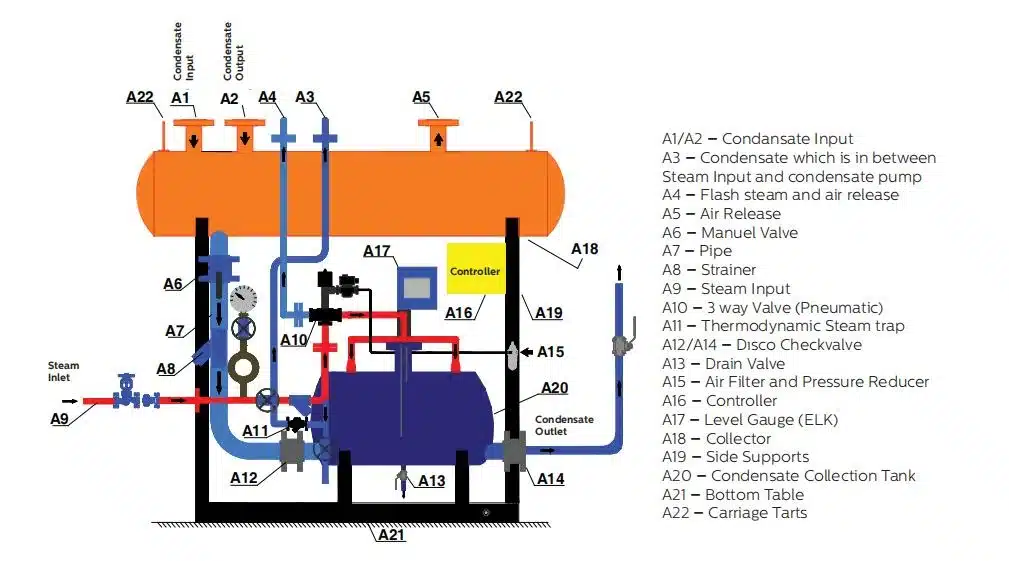
Additional challenges linked to cavitation, such as vibration, can be serious, possibly leading to mechanical damage to the whole pump casing. Moreover, problems associated with cavitation have the potential to reduce the expected pump life of 10-15 years to a mere two years in extreme situations.
Why has cavitation become more common compared to its relatively isolated occurrence two decades ago? A plausible reason could be that today’s design engineers in the water industry are expected to grasp a vast array of different technologies. It’s unrealistic to expect these professionals to be experts across multiple areas. Essentially, cavitation is primarily due to poor pump system design and a lack of awareness regarding its causes.
In this article, we delve into the causes and effects of cavitation and the procedures to adopt during the design stage. We’ll explore potential solutions for installations.
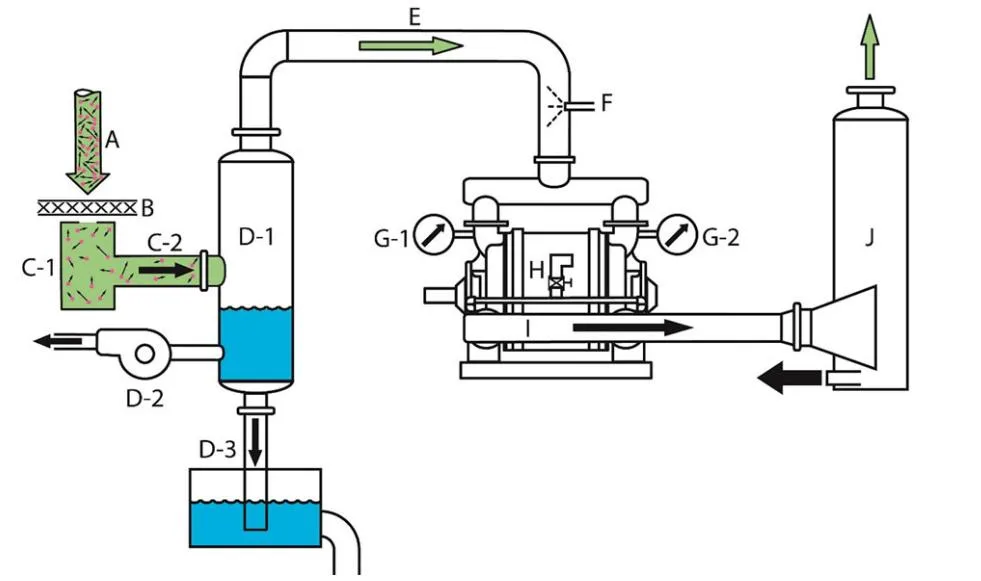
What is Cavitation Phenomenon for Pump
Cavitation is a phenomenon that occurs in fluid flow systems and is particularly relevant in the operation of pumps.
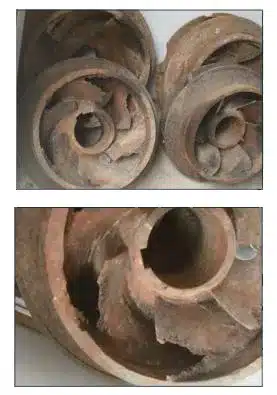
Cavitation happens when the pressure in a fluid drops below its vapor pressure, causing the fluid to vaporize and form air bubbles or cavities. These vapor bubbles then travel with the fluid flow towards areas of higher pressure, where they collapse or implode.
The implosion of these bubbles can cause significant issues. It generates intense shockwaves that can cause pitting and erosion on the surfaces of the pump components, particularly on the impeller blades. Over time, this cavitation damage can lead to reduced efficiency, increased vibration and noise, and eventually failure of the pump.
Cavitation is most likely to occur in pumps when the Net Positive Suction Head Available (NPSHA), a measure of the pressure experienced by the fluid as it enters the pump, falls below the Net Positive Suction Head Required (NPSHR), which is the minimum pressure required to avoid cavitation, as specified by the pump manufacturer.
In order to prevent cavitation, it’s important to properly design and operate the pumping system so that the pressure of the fluid never falls below its vapor pressure. This can involve adjusting the pump’s operating point, increasing the liquid’s vapor pressure at the pump suction, reducing the temperature of the fluid (which decreases its vapor pressure), or selecting a pump with a lower NPSHR.
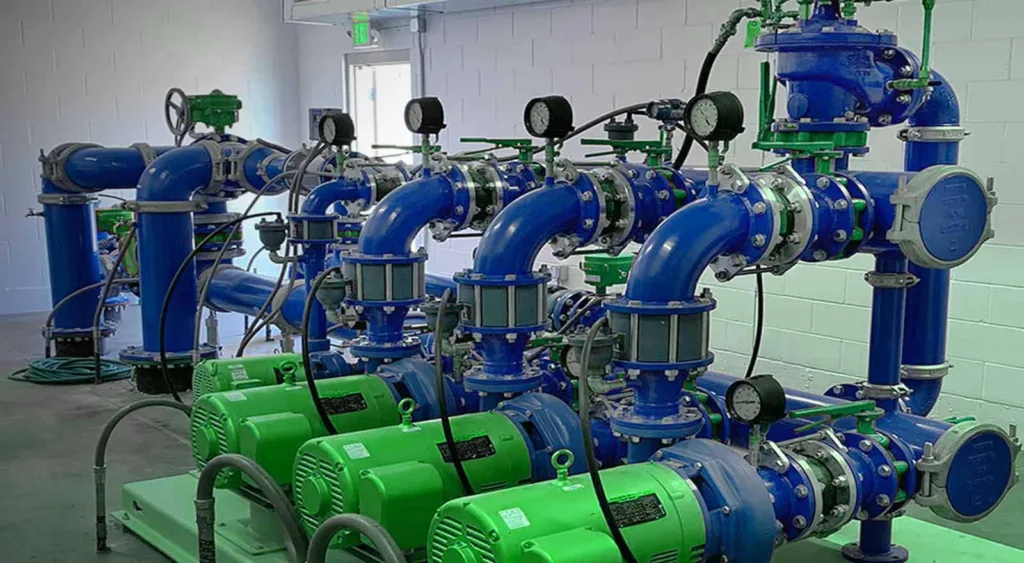
Pump Cavitation Causes
Pump cavitation is caused by several factors that are often interrelated. Here are the main causes:
1. Insufficient Net Positive Suction Head (NPSH)
This is the most common cause of pump cavitation. NPSH is the difference between the pressure at the pump’s inlet and the vapor pressure of the pumped fluid. When the NPSH is too low, the pressure of the fluid can drop below its vapor pressure, causing the fluid to vaporize and form bubbles.
2. Improper Pump Selection
Choosing a pump that’s not suitable for the application can also lead to cavitation. If the pump isn’t designed to handle the specific flow rate, pressure, temperature, or type of fluid being pumped, cavitation can occur.
3. High Pumping Speeds
Operating the pump at too high a speed can reduce the pressure at the pump inlet, leading to cavitation.
4. Poor Piping Layout
The piping design on the suction side of the pump can significantly influence the occurrence of cavitation. If the pipes are too long, have too many bends or restrictions, or if the diameter is too small, it can cause a pressure drop and result in cavitation.
5. Fluid Temperature
The vapor pressure of a fluid increases with temperature. So, if the fluid’s temperature is too high, it’s more likely to vaporize and cause cavitation.
6. Pump Wear and Damage
Over time, wear and tear on the pump impeller, housing, or seals can change the flow characteristics within the pump, increasing the risk of cavitation.
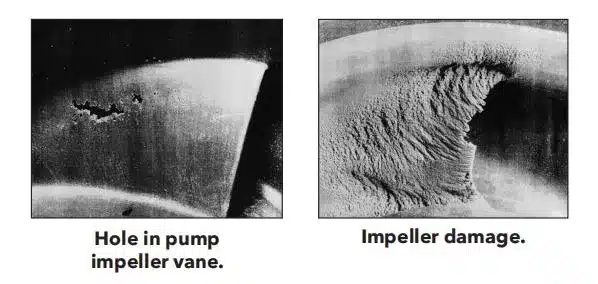
Prevent Pump Cavitation
Preventing pump cavitation involves a comprehensive understanding of the system design, correct pump selection, and appropriate operating practices. Here are several measures to consider:
Ensure Adequate Net Positive Suction Head (NPSH)
NPSH is the difference between the pressure at the pump inlet and the vapor pressure of the fluid being pumped. You should always ensure that the NPSH available in the system is greater than the NPSH required by the pump. This prevents the fluid’s pressure from dropping below its vapor pressure and prevents cavitation.
Correct Pump Selection
Choose a pump that is appropriate for the specific application. This includes considering factors such as the flow rate, pressure, temperature, and type of fluid being pumped. The pump should have an NPSH required that is lower than the NPSH available in the system.
Control Pumping Speeds
Operating the pump within its recommended range of speeds will help prevent the inlet pressure from dropping too low.
Optimize Piping Design
The design of the piping system, particularly on the suction side of the pump, plays a critical role in cavitation prevention. Avoid long suction lines, too many bends, and restrictive components that can lead to pressure drops.
Control Fluid Temperature
The vapor pressure of a fluid increases with temperature, making cavitation more likely. If possible, control the temperature of the fluid to keep it below its boiling point at the pump inlet pressure.
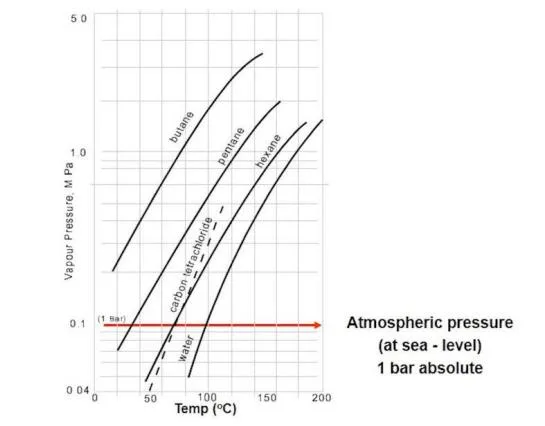
Regular Pump Maintenance
Routine inspections and maintenance of the pump can help identify and fix issues that could lead to cavitation, such as wear and damage to the impeller, seals, or pump housing.
By following these preventive measures, you can significantly reduce the risk of pump cavitation and ensure optimal pump performance and longevity.
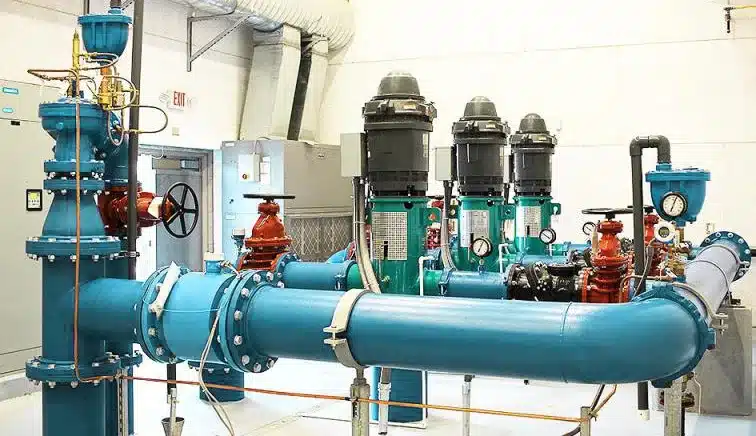
Pump cavitation allowance
Pump and cavitation margin allowance is a design and operating consideration that acknowledges the possibility of pump cavitation under certain conditions, and the need to ensure that its effects are minimized to an acceptable level. It primarily involves designing and operating the pump and the system in a way that ensures the Net Positive Suction Head Available (NPSHA) is greater than the Net Positive Suction Head Required (NPSHR) by a safe margin.
The exact cavitation allowance can vary depending on the specific pump design, the type of fluid being pumped, and the operating conditions. However, a common rule of thumb is to ensure that the NPSHA is at least 1.5 to 2 times greater than the NPSHR. This helps to ensure that even if conditions change (e.g., if the temperature of the fluid increases, leading to higher vapor pressure), the risk of cavitation remains low.
Pump cavitation allowance is a crucial aspect of pump design and operation. It helps in ensuring the pump’s long-term performance and durability, and in avoiding issues such as vibration, noise, and mechanical damage that can be caused by cavitation. As such, it needs to be carefully considered during the pump selection and system design process, as well as in the ongoing operation and maintenance of the pump.
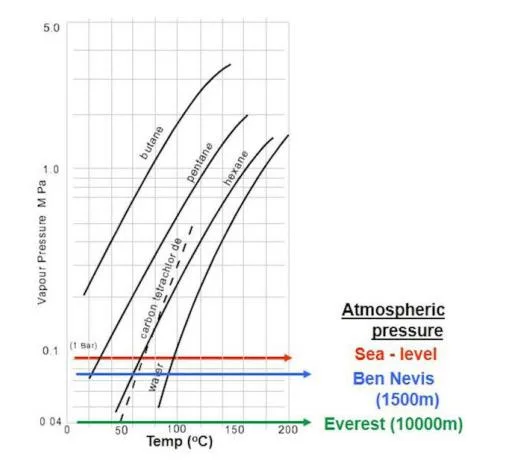
The Basic Relationship of Pump Cavitation
The conditions for pump cavitation are determined by both the pump itself and the suction device. Therefore, to study the conditions of pump cavitation occur in, we should consider both the pump itself and the suction device. The basic relationship of pump cavitation is
NPSHc ≤ NPSHr ≤ [NPSH] ≤ NPSHa
NPSHa=NPSHr(NPSHc)——The pump starts to cavitate
NPSHa NPSHa>NPSHr(NPSHc)——The pump has no cavitation
In the formula, NPSHa: The NPSH of the device is also called the effective NPSH. The larger the value, the less likely it will be cavitation. If you want to increase the NPSH of the device, you can only increase the inlet pressure of the pump under the condition of constant atmospheric pressure and water temperature.
NPSHr: The NPSH of the pump, also known as the necessary NPSH or the dynamic pressure drop at the pump inlet, the smaller the value, the better the anti-cavitation performance.
NPSHc——Critical NPSH, which refers to the NPSH corresponding to a certain value of pump performance drop.
[NPSH]——Allowable NPSH, which is the NPSH used to determine the service conditions of the pump, usually takes [NPSH]=(1.1~1.5)NPSHc.
Calculation of NPSH for the Device
NPSHa=Pc/ρg-hg-hc-Pv/ρg (inhalation)
NPSHa=Pc/ρg+hg-hc-Pv/ρg (backflow)
In the formula: NPSHa – NPSH of the device (m);
Pc/ρg – the absolute pressure head of the suction liquid surface (m);
Pv/ρg – vaporization pressure head at liquid temperature (m);
Pc – the absolute pressure of the suction liquid level of the closed system (Pa);
Pv – vaporization pressure at liquid temperature (Pa);
(The pressure of the water inlet surface of the open system is the atmospheric pressure Pa, where Pc=Pa)
hg—pump suction geometry height (m); (vertical height from water inlet liquid level to pump impeller reference plane)
hc – resistance loss head of pump suction system device (m); (including local loss and along
process loss)
ρ – liquid density; (Kg/m3)
g – acceleration of gravity 9.8 (m/s2)
The device parameters Pc, hg, hc in the formula, the water level in the open system is the normal atmospheric pressure conditions Pa is related to the local altitude. The properties of the liquid, Pv and ρ, are related to the temperature of the liquid, and Pv can be found in the manual. Therefore, for the same suction system device, its NPSHa value is different at different altitudes or different delivery liquid temperatures.
Calculation of Pump Installation Height
The installation height of the pump must meet the NPSH value provided by the device. The calculation formula for the installation height is:
H ≤ HA- HV – NPSHR – △hs – 0.5,
In the formula:
HA: liquid surface pressure of the pumped liquid (liquid column);
HV: the vaporization pressure of the pumped liquid (liquid column);
NPSHR: The necessary NPSH of the pump;
△hs: The total resistance loss of the suction pipeline, the unit is m.
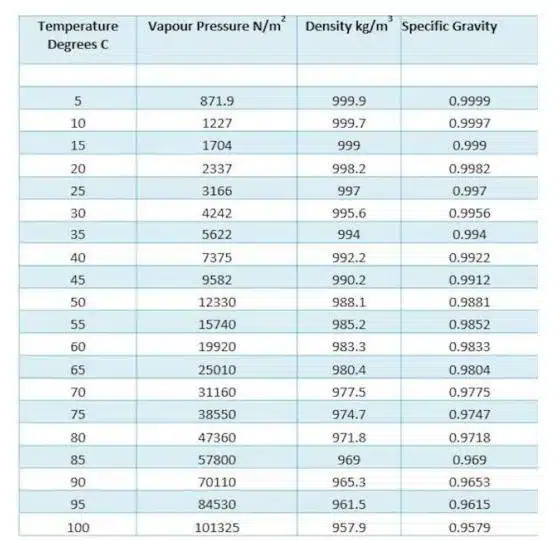
Measures to Prevent Cavitation
In order to prevent cavitation, NPSHa must be increased so that NPSHa>NPSHr can prevent cavitation as follows:
a. Decrease the geometric suction height hg (or increase the geometric backflow height);
b. To reduce the suction loss hc, try to increase the diameter of the suction pipe, minimize the length of the pipe, elbows and accessories, etc.;
c. Prevent running under large flow for a long time;
d. Under the same speed and flow rate, double suction inlet pump is used, because the inlet flow rate is reduced, and the pump is not prone to cavitation;
e. When cavitation occurs in the pump, the flow rate should be reduced or the speed should be reduced;
f. The condition of the pump suction pool has an important influence on pump cavitation;
g. For pumps operating under harsh conditions, in order to avoid cavitation damage, cavitation-resistant materials can be used.
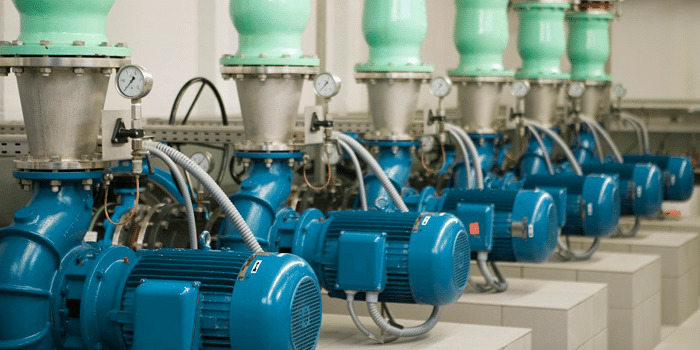
If you have any questions, welcome to consult our sales representatives for free. At the same time, we can provide you with the resources of all pump manufacturers in China for free.





